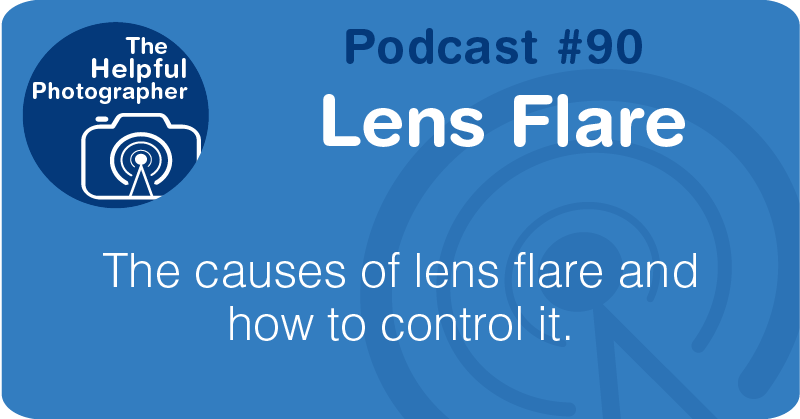Lens Flare #90
Lens Flare #90

Over the past month a couple of people have shared images with me with “strange” dots or streaks of light. Unfortunately this wasn’t evidence of ghosts but flare. Flare is the result of a point source light hitting the glass of your lens at certain angles. The results of flare can be highly desired or not at all. Lens flare can increase or decrease depending on the angle of the light, the design of the glass, aperture settings and also how dirty your lens is. So what does lens flare look like and what am I talking about specifically. The most desired lens flare is when the light creates an ethereal look and often comes in the form of what looks like halos of light. Sometimes it can really enhance the look of a photo. One of the ways you can intensify this is by closing down your aperture, although very often I find that this is being added in post process and not during the shoot itself. The reason is because lens flare is so difficult to predict, even if you close down your aperture and are shooting directly into the sun, a millimeter change in angle can change everything. So, if you’re not getting that nice halo of light while shooting just add it in post process and fake it.
Another very desired effect of lens flare is when small point source lights like street lights, burst into little stars. You can again intensify this effect by simply closing down your aperture. In my experience you have to get to at least f/8 or higher. Although these days there seems diminishing returns once you get much past f/11, because you are introducing other problems. If you’re not sure what I’m talking about check out episode 71.
Those are desirable outcomes of lens flare, but what about the undesirable outcomes. One of those outcomes are small solid dots of light, usually white in color but sometimes yellowish and even green. This problem can be compounded by a dirty lens. Normally it’s fingerprints on the front element, and sometimes a dirty back element as well. Another cause is often a cheap filter. So the lesson is to keep your glass clean and remove filters to eliminate most of the problems. Sometimes, rather than circles you might get an arbitrary streak of light. The most undesirable outcome is when the flare makes the entire image look like it’s out of focus or foggy, when you actually had focus and there was no fog. This is most often caused when light is raking across the lens from the side and can mostly be avoided through the use of a lens hood, which I went over on episode 89.
What if your lens is completely clean and you are shooting without a filter but you are still having problems. Unfortunately, most people with this complaint are shooting directly into the light source and there’s nothing you can do to fix it. Perhaps file a complaint with your neighborhood glass engineer.
But what about the use of a polarization filter? I spoke with both a physicist and a glass engineer for the answer to this question. Without actually testing anything in real life, they both felt that a polarizing filter would not likely do much to increase or decrease lens flare. There are several reasons for this. It all depends on the angle of that light, where that light comes from, and then also the design of the filter itself. They believe that most of the flare is happening further in the lens, while a polarizing filter is sitting at the very front. So you’ll have to try and see what happens.
In conclusion, if you want more lens flare close down your aperture, and if you want less open up your aperture. Change your angle to intensify or diminish the effects of lens flare. Use a hood and stop shooting directly into the light source if you want to avoid it altogether.











